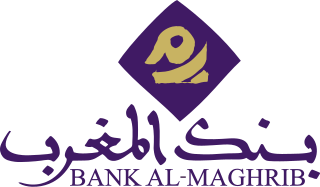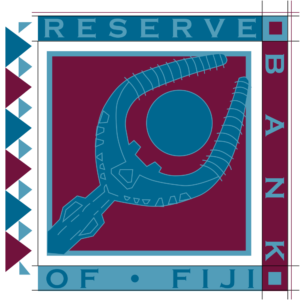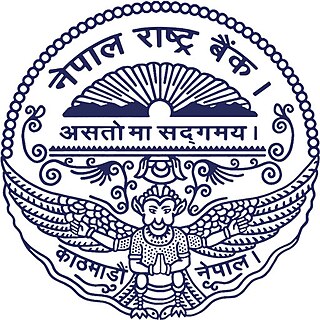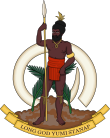
The Reserve Bank of India, abbreviated as RBI, is India's central bank and regulatory body responsible for regulation of the Indian banking system. It is under the ownership of Ministry of Finance, Government of India. It is responsible for the control, issue and maintaining supply of the Indian rupee. It also manages the country's main payment systems and works to promote its economic development. Bharatiya Reserve Bank Note Mudran (BRBNM) is a specialised division of RBI through which it prints and mints Indian currency notes (INR) in four of its currency printing presses located in Nashik, Dewas, Mysore and Salboni. The RBI established the National Payments Corporation of India as one of its specialised division to regulate the payment and settlement systems in India. Deposit Insurance and Credit Guarantee Corporation was established by RBI as one of its specialised division for the purpose of providing insurance of deposits and guaranteeing of credit facilities to all Indian banks.

The Central Bank of Sri Lanka is the monetary authority of Sri Lanka. It was established in 1950 under the Monetary Law Act No.58 of 1949 (MLA) and in terms of the Central Bank of Sri Lanka Act No. 16 of 2023, the CBSL is a body corporate with perpetual succession and a common seal. The Central Bank has administrative and financial autonomy. The CBSL has two main boards in operation, namely,

The State Bank of Pakistan (SBP) is the Central Bank of Pakistan. Its Constitution, as originally laid down in the State Bank of Pakistan Order 1948, remained basically unchanged until 1 January 1974, when the bank was nationalised and the scope of its functions was considerably enlarged. The State Bank of Pakistan Act 1956, with subsequent amendments, forms the basis of its operations today. The headquarters are located in the financial capital of the country in Karachi. The bank has a fully owned subsidiary with the name SBP Banking Services Corporation (SBP-BSC), the operational arm of the Central Bank with Branch Office in 16 cities across Pakistan, including the capital Islamabad and the four provincial capitals Lahore, Karachi, Peshawar, Quetta. The State Bank of Pakistan has other fully owned subsidiaries as well: National Institute of Banking and Finance, the training arm of the bank providing training to Commercial Banks, the Deposit Protection Corporation, and ownership of the Pakistan Security Printing Corporation.

The Bangko Sentral ng Pilipinas is the central bank of the Philippines. It was established on July 3, 1993, pursuant to the provision of Republic Act 7653 or the New Central Bank Act of 1993 as amended by Republic Act 11211 or the New Central Bank Act of 2019. The principal author was Senator Franklin Drilon. It was signed by President Rodrigo Duterte.

Bangladesh Bank is the central bank of Bangladesh and is a member of the Asian Clearing Union. It is fully owned by the Government of Bangladesh.

The Bank Al-Maghrib is the central bank of the Kingdom of Morocco. It was founded in 1959 as the successor to the State Bank of Morocco. In 2008 Bank Al-Maghrib held reserves of foreign currency with an estimated worth of US$36 billion. In addition to currency management, the Bank Al-Maghrib also supervises a number of private banks supplying commercial banking services. The bank is headquartered on Avenue Mohammed V in Rabat; it has a branch in Casablanca and agencies in 18 other cities in Morocco.
The National Bank of Ethiopia is the central bank of Ethiopia. Its headquarters are in the capital city of Addis Ababa. Mamo Mihretu is the current governor of the bank.

The Reserve Bank of Zimbabwe is the central bank of Zimbabwe and is headquartered in the capital city Harare.

The Reserve Bank of Fiji is the central bank of the Pacific island country of Fiji. The responsibilities of the RBF include the issue of currency, control of money supply, currency exchange, monetary stability, promotion of sound finances, and fostering economic development.

The Central Bank of Azerbaijan is the central bank of Azerbaijan Republic. The headquarters of the bank is located in the capital city Baku.

The Bank of Ghana is the Central Bank of Ghana. It is located in Accra and was formed in 1957. The Bank of Ghana has Seven Regional Offices in addition to its head office in Accra. The regional offices are located in the following cities, Hohoe, Kumasi, Suyani, Tamale, Takoradi, Bolgatanga, Wa. The regional offices are responsible for implementing the policies and directives of the Bank of Ghana in their respective regions. They also provide banking services to the government, financial institutions, and the public.

The Bank of Mozambique is the central bank of Mozambique. The bank does not function as a commercial bank, and has the responsibility of governing the monetary policies of the country. The president of the Republic appoints the governor. The bank is situated in the capital, Maputo, and has two branches, one in Beira and one in Nampula. The Bank of Mozambique is active in developing financial inclusion policy and is a member of the Alliance for Financial Inclusion.

The Bank of Zambia (BoZ), is the central bank of Zambia.

The Central Bank of The Bahamas is the reserve bank of The Bahamas based in the capital Nassau.

The Central Bank of Samoa, situated in the capital Apia beside the main government buildings, issues the Samoan currency, the Samoan tālā as well as regulates and manages the exchange rate with foreign currencies. In its role as the central bank for the government and the country, it is also responsible for the registration and supervision of commercial banks. The current governor since 2011 has been Maiava Atalina Emma Ainuu-Enari.

The Central Bank of Trinidad and Tobago is the central bank of Trinidad and Tobago.

The National Reserve Bank of Tonga is the central bank of Tonga. The Reserve Bank is responsible for regulating the issue and supply of domestic and international currency, as well as promoting monetary stability and economic development. It also advises the Ministry of Finance on banking and monetary matters, acts as the principal banker and fiscal agent of the Government of Tonga, and is responsible for the licensing and supervision of financial institutions. The current Governor is Ngongo Kioa.

The Nepal Rastra Bank was established April 26, 1956 A.D. under the Nepal Rastra Bank Act, 1955, to discharge the central banking responsibilities including guiding the development of the embryonic domestic financial sector. As of now, the NRB is functioning under the new Nepal Rastra Bank Act, 2002. The functions of NRB are to formulate required monetary and foreign exchange policies so as to maintain the stability in market prices, to issue currency notes, to regulate and supervise the banking and financial sector, to develop efficient payment and banking systems among others. The NRB is also the economic advisor to the government of Nepal. As the central bank of Nepal, it is the monetary, supervisory and regulatory body of all the commercial banks. development banks, finance companies and micro-finances institutions.

The Palestine Monetary Authority is the emerging central bank of Palestine. The PMA, located in Ramallah, was established in 1994 following the signing of the Protocol on Economic Relations between the Palestinians and Israel. It is an independent public institution responsible for the formulation and implementation of monetary and banking policies, to safeguard the banking sector and to ensure the growth of the national economy in a balanced manner.





















